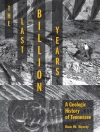This book reviews the distribution of soils across Egypt, their history, genesis, pollution and management. The conservation of Egyptian soils, soils and their connections to human activities, as well as some future soil issues are also highlighted. It is well known that soil is the main source for food, feed, fuel and fiber production. Accordingly, the study of soils is not only a crucial issue but also an urgent task for all nations worldwide. Due to their important roles in agroecosystems as well as many aspects of our lives, soils have direct and indirect functions in the agricultural, industrial and medicinal sectors. Therefore, understanding the physical, chemical and biological properties of soils, as well as soil security, have now become emerging issues. Climate change has a very dangerous dimension in Egypt concerning the rising sea level. Many coastal zones are already threatened by this sea level rise, and may ultimately disappear. At the same time, water shortages andsoil pollution represent the main challenges for the Egyptian nation.
Generally speaking, the environmental challenges that Egypt now faces include improving and sustaining soil health, soil carbon sequestration, wastewater treatment, and avoiding the overuse of fertilizers and pesticides. Therefore, this book examines in detail the soils of Egypt from various perspectives including their genesis, history, classification, pollution and degradation, soil security, soil fertility and land uses.
Inhoudsopgave
Introduction.- Soil research history.- Climate.- Geology and geomorphology.- Soil maps and major soil types.- Soil properties and its sustainability.- Soil classification.- Soil fertility and its security.- Land use and vegetation.- Soil pollution and its management.- Soils and humans.- Future soil issues.












